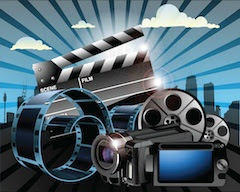Media Literacy
What is Media Literacy?
For centuries, literacy has referred to the ability to read and write. Today, we get most of our information through an interwoven system of media technologies. The ability to read many types of media has become an essential skill in the 21st Century. Media literacy is the ability to access, analyze, evaluate, and create media. Media literate youth and adults are better able to understand the complex messages we receive from television, radio, Internet, newspapers, magazines, books, billboards, video games, music, and all other forms of media. Media literacy skills are included in the educational standards of every state—in language arts, social studies, health, science, and other subjects. Many educators have discovered that media literacy is an effective and engaging way to apply critical thinking skills to a wide range of issues.
Media Literacy Project’s approach to media literacy education comes from a media justice framework. Media Justice speaks to the need to go beyond creating greater access to the same old media structure. Media Justice takes into account history, culture, privilege, and power. We need new relationships with media and a new vision for its control, access, and structure. Media Justice understands that this will require new policies, new systems that treat our airways and our communities as more than markets.
Media literacy skills can help youth and adults:
- Develop critical thinking skills
- Understand how media messages shape our culture and society
- Identify target marketing strategies
- Recognize what the media maker wants us to believe or do
- Name the techniques of persuasion used
- Recognize bias, spin, misinformation, and lies
- Discover the parts of the story that are not being told
- Evaluate media messages based on our own experiences, skills, beliefs, and values
- Create and distribute our own media messages
- Advocate for media justice
- Understand how media messages shape our culture and society
- Identify target marketing strategies
- Recognize what the media maker wants us to believe or do
- Name the techniques of persuasion used
- Recognize bias, spin, misinformation, and lies
- Discover the parts of the story that are not being told
- Evaluate media messages based on our own experiences, skills, beliefs, and values
- Create and distribute our own media messages
- Advocate for media justice
A Broader Definition
Media literacy: the ability to ACCESS, ANALYZE, EVALUATE, CREATE and ACT using all forms of communication is interdisciplinary by nature. Media literacy represents a necessary, inevitable, and realistic response to the complex, ever-changing electronic environment and communication cornucopia that surround us.
To become a successful student, responsible citizen, productive worker, or competent and conscientious consumer, individuals need to develop expertise with the increasingly sophisticated information and entertainment media that address us on a multi-sensory level, affecting the way we think, feel, and behave.
Today’s information and entertainment technologies communicate to us through a powerful combination of words, images, and sounds. As such, we need to develop a wider set of literacy skills helping us to both comprehend the messages we receive and effectively utilize these tools to design and distribute our own messages. Being literate in a media age requires critical thinking skills that empower us as we make decisions, whether in the classroom, the living room, the workplace, the boardroom, or the voting booth.
Finally, while media literacy does raise critical questions about the impact of media and technology, it is not an anti-media movement. Rather, it represents a coalition of concerned individuals and organizations, including educators, faith-based groups, health care-providers, and citizen and consumer groups, who seek a more enlightened way of understanding our media environment.
Over the years, many definitions and visions of media literacy have been created to reflect different points of view, different approaches and goals, and different audiences. Through the postings in various sections of the NAMLE web site, we will try to present many of these definitions along with their sources. We welcome input from visitors to the website.
Media Literacy in Our Lives
Just what is media? And how does it differ from mass media? Media is the means of communication that reaches or influences people, such as radio and television, newspapers, and magazines. Mass media does the exact same, but with a goal of reaching much larger numbers of people. Both play an enormous role in our lives, despite the fact that media consumption often goes easily unnoticed. But what to do with all this information? That's where media literacy comes in!Media literacy involves the ability to access, analyze, evaluate, and create media. Media communication has become quite a force in society today, allowing for consumption of loads of information. And today's digital consumers are masters of media multitasking, which involves simultaneous contact with two or more other forms of media. As consumers of media, it is important to have the ability to understand, translate, and use the information we receive.
Source:
http://medialiteracyproject.org/learn/media-literacy/
https://namle.net/publications/media-literacy-definitions/
https://study.com/academy/lesson/what-is-media-literacy-definition-importance-examples.html



Comments
Post a Comment